Vocational training equipment refers to specialized tools and apparatus designed to provide hands-on experience and practical knowledge in specific trades or professions. It serves as a bridge between theoretical learning and real-world application, playing a crucial role in skill development across various industries.

Significance of Vocational Training Equipment
The significance of vocational training equipment lies in its ability to offer learners practical experiences that are essential for honing their skills. By simulating real-world scenarios, this equipment ensures that individuals are well-prepared for the challenges they may encounter in their chosen professions.
Applicable Areas of Vocational Training Equipment
Vocational training equipment finds applications in diverse areas, including:
- Automotive Education: Cutaway models, electrical training tools, and engine training equipment.
- Medical Training: Simulators, mannequins, and diagnostic tools for medical professionals.
- Information Technology: Hardware, software, and networking tools for IT professionals.
- Culinary Arts: Kitchen appliances and specialized tools for aspiring chefs.
- Construction Trades: Machinery, safety gear, and tools for hands-on learning in construction.
- Electrical and Electronics: Circuit boards, electronic components, and testing devices.
- Welding and Metalworking: Welding machines, metalworking tools, and safety equipment.
- Hospitality: Equipment for hotel management simulations and culinary training.
Different Type of Vocational Training Equipment
Automotive Training Equipment
Cutaway Models:
- Purpose: Cutaway models provide a transparent view of the internal components of vehicles. They help students understand the intricacies of automotive systems, including engines, transmissions, and other vital components.

Automobile Electrical Training Equipment:
- Purpose: This equipment focuses on electrical systems in automobiles. It includes tools and simulators for understanding wiring, circuitry, and electronic components. It aids in training for diagnosing and repairing electrical issues in vehicles.

Electric Vehicle Training Equipment:
- Purpose: With the rise of electric vehicles, this equipment is designed to educate individuals on the unique systems and components of electric cars. It covers aspects like battery technology, charging systems, and electric drivetrains.
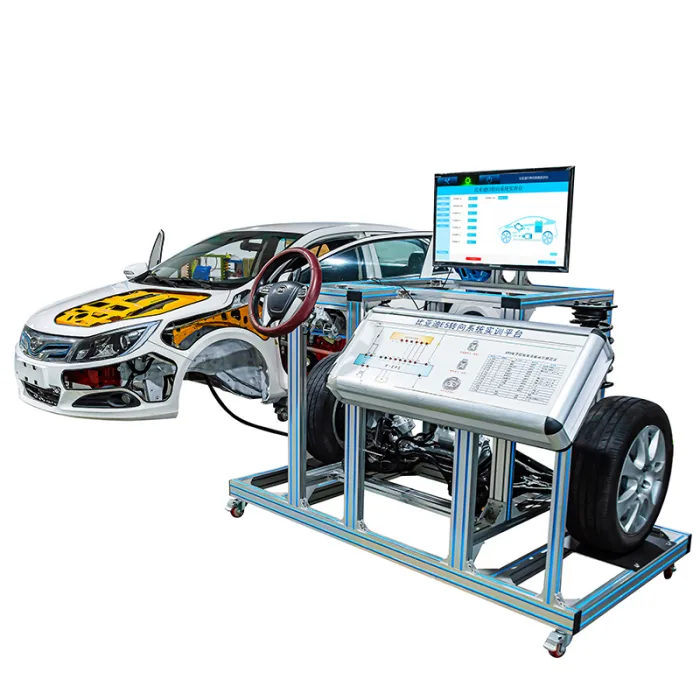
Automobile Engine Training Equipment:
- Purpose: Specifically targeting engines, this equipment allows hands-on learning about different types of engines, their components, and the principles of internal combustion. It’s essential for understanding the heart of an automobile.
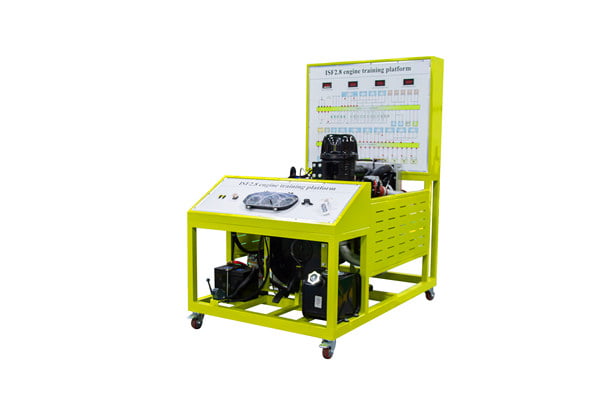
Diagnostic Tools and Equipment:
- Purpose: Diagnostic tools help identify and troubleshoot issues within a vehicle’s systems. This equipment includes scanners, code readers, and software that enable students to interpret and address automotive diagnostics.
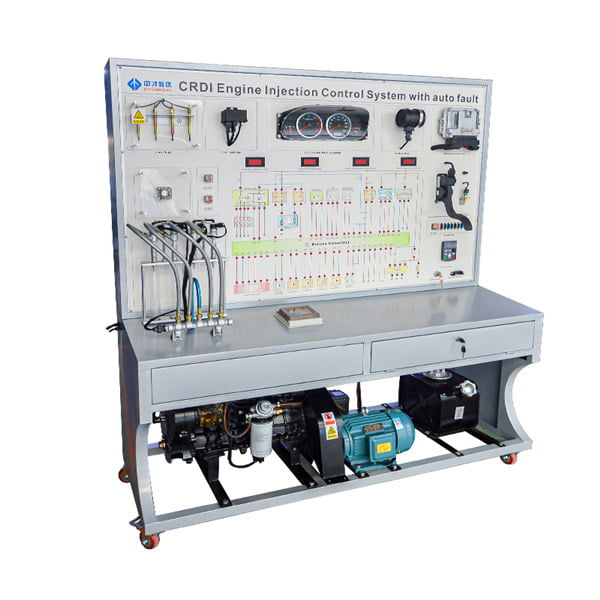
Wheel Alignment and Suspension Training Tools:
- Purpose: Focused on the chassis and suspension systems, these tools allow students to learn about wheel alignment, steering, and suspension components. Proper wheel alignment is critical for vehicle safety and performance.
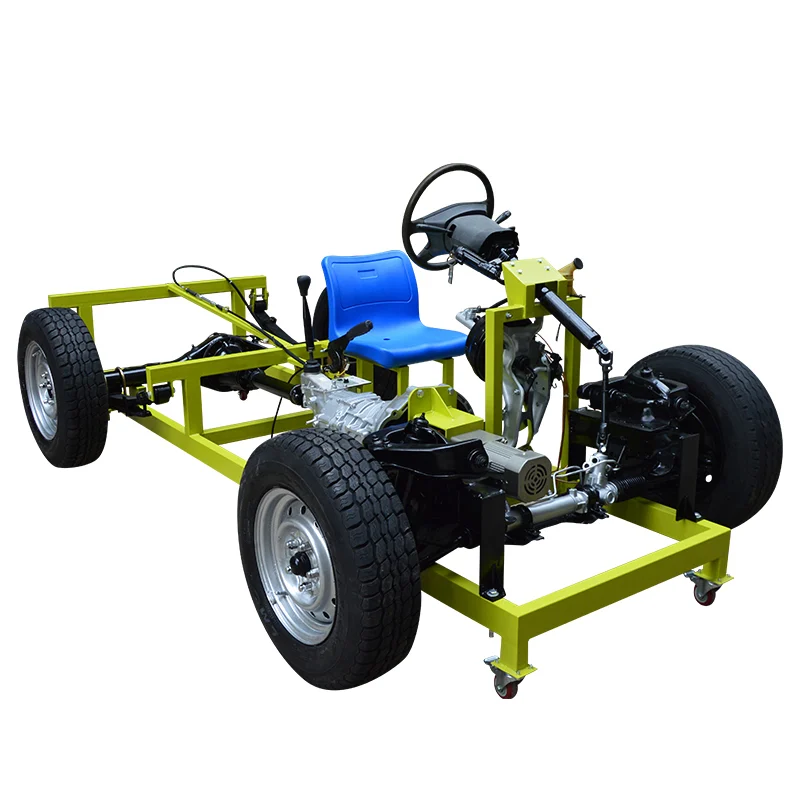
Air Conditioning and HVAC Training Equipment:
- Purpose: With a focus on climate control systems, this equipment provides insight into automotive air conditioning and heating. It covers topics such as refrigerant handling, system diagnosis, and repair.
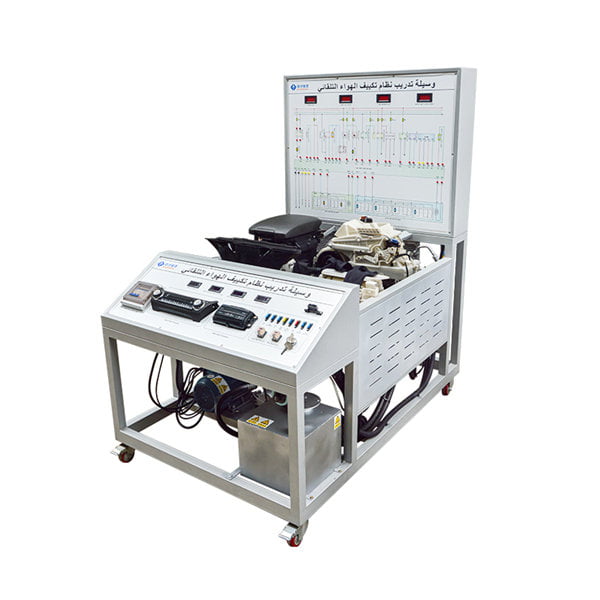
Transmission Training Equipment:
- Purpose: Transmission training tools allow students to study different types of transmissions, including automatic and manual. Understanding transmission systems is crucial for diagnosing and repairing issues related to vehicle drivetrains.
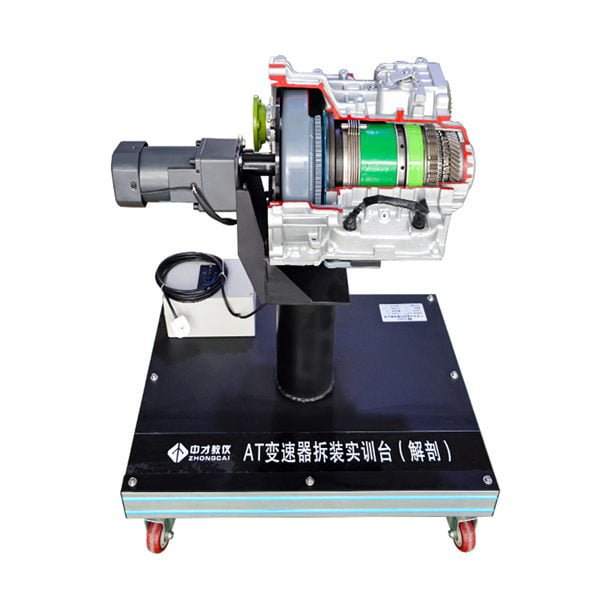
Brake System Training Equipment:
- Purpose: Brake system training equipment helps individuals learn about the components and operation of automotive braking systems. It covers topics such as disc brakes, drum brakes, and anti-lock braking systems (ABS).
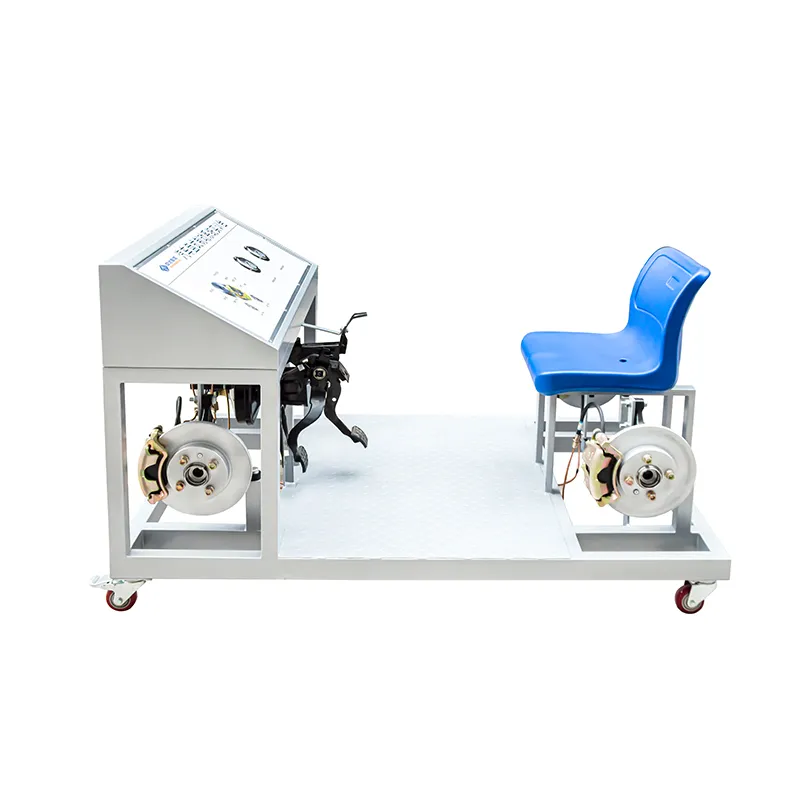
Fuel Injection Training Systems:
- Purpose: Focused on modern fuel delivery systems, this equipment covers fuel injection technology. It helps students understand electronic fuel injection (EFI) systems and their role in optimizing engine performance and efficiency.
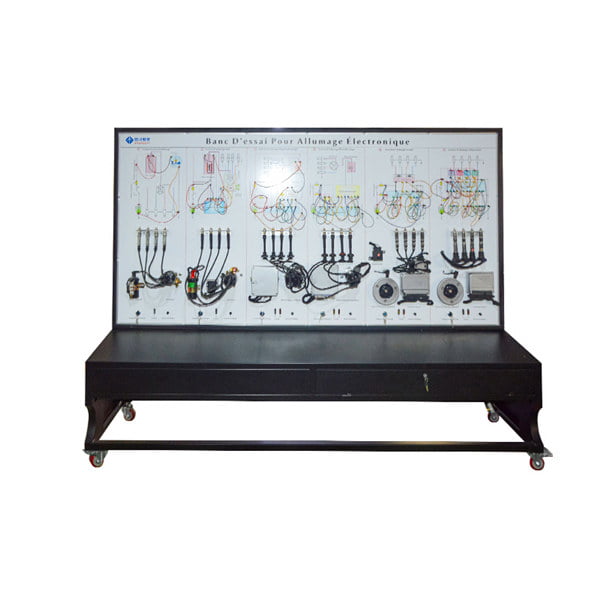
Hybrid Vehicle Training Equipment:
- Purpose: Hybrid vehicle training equipment is designed to educate individuals about hybrid technology, combining internal combustion engines with electric propulsion. It covers hybrid drivetrains, batteries, and regenerative braking systems.
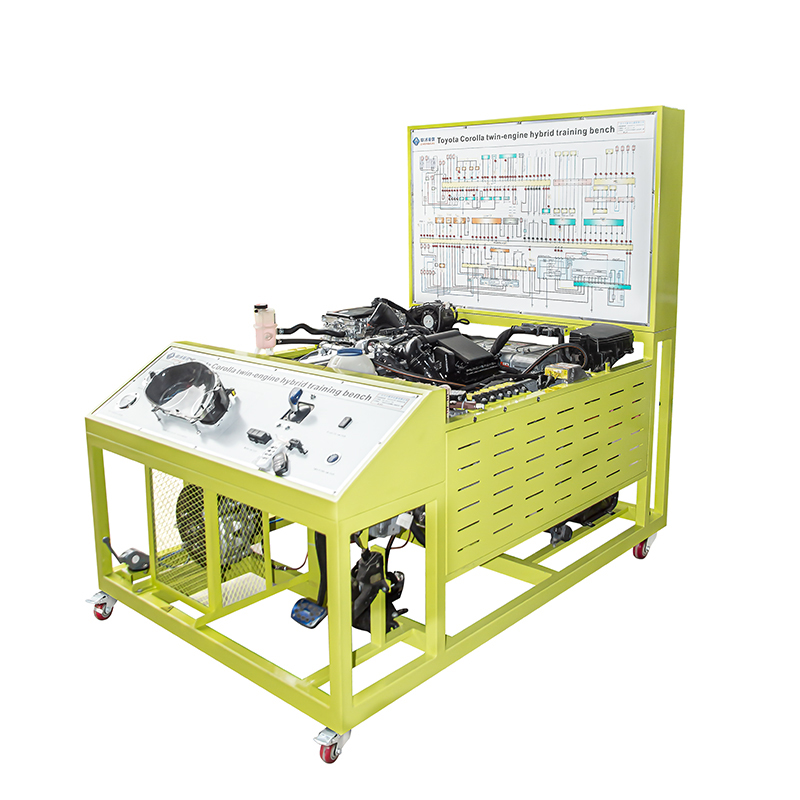
Medical Training Equipment
Patient Simulation:
- Purpose: Replicates human physiology for practicing clinical skills, patient assessment, and emergency scenarios.

Surgical Training:
- Purpose: Provides a platform, virtual or physical, for practicing surgical procedures to enhance skills in a controlled environment.

Anatomical Models:
- Purpose: Represents body parts for educational purposes, aiding in the study and understanding of the human body’s structure.

Diagnostic Imaging Simulation:
- Purpose: Allows medical professionals to practice interpreting medical images, enhancing diagnostic skills using X-ray, MRI, and CT simulators.

Procedural Training:
- Purpose: Encompasses various simulators for specific medical procedures such as IV administration, CPR, obstetrics/gynecology, and dental interventions.

Information Technology (IT) Training Equipment
Computer Workstations:
- Purpose: Provide computing resources for tasks such as programming, software development, and network configurations. Each workstation typically should be equipped with a high-performance computer.

Network Equipment:
- Purpose: Includes routers, switches, firewalls, etc., for building and simulating network architectures. Such devices allow students to practice actual network configuration and management.

Servers:
- Purpose: Provide server hardware for hosting various services, such as web servers and database servers. Students can learn server management, configuration, and maintenance.

Access to Cloud Services:
- Purpose: Offer students access to cloud services such as Amazon Web Services (AWS) or Microsoft Azure for practical exercises in cloud computing, storage, and deployment.

Network Security Devices:
- Purpose: Includes firewalls, intrusion detection systems (IDS), intrusion prevention systems (IPS), etc., for students to learn network security technologies and implementations.

Culinary Training Equipment
Commercial Kitchen Range:
- Purpose: A commercial kitchen range includes stovetops and ovens, allowing students to practice cooking techniques like sautéing, boiling, baking, and roasting. It’s a fundamental tool for various culinary preparations.

Chef’s Knives Set:
- Purpose: A quality set of chef’s knives is essential for teaching knife skills, precision cutting, and various chopping techniques. It includes knives like chef’s knives, paring knives, and utility knives.

Food Processor:
- Purpose: Food processors assist in tasks such as chopping, slicing, grating, and pureeing. They are versatile tools for preparing ingredients efficiently and can be used for both savory and pastry applications.

Commercial Stand Mixer:
- Purpose: A commercial stand mixer is crucial for pastry and baking classes. It simplifies tasks like mixing dough, whipping cream, and beating eggs, providing consistency and saving time.

Convection Oven:
- Purpose: Convection ovens circulate hot air, ensuring even cooking and browning of food. They are essential for baking pastries, bread, and other baked goods, providing a controlled and consistent baking environment.

Construction Training Equipment
Excavator Simulator:
- Purpose: Excavator simulators replicate the controls and operation of real excavators. They allow trainees to practice excavation tasks, including digging, loading, and moving materials, in a virtual environment.

Construction Safety Gear:
- Purpose: Safety gear includes items such as hard hats, safety vests, gloves, and steel-toed boots. Trainees learn how to properly wear and use safety gear, emphasizing the importance of safety on construction sites.
Concrete Mixer:
- Purpose: Concrete mixers are used to demonstrate and practice the proper mixing of concrete. Trainees learn about concrete ratios, mixing techniques, and the operation of the equipment.

Construction Crane Simulator:
- Purpose: Crane simulators provide a virtual experience of operating construction cranes. Trainees practice lifting and moving heavy loads, improving their skills in crane operation and safety.
Power Tools Set:
- Purpose: A set of power tools, including drills, saws, and nail guns, allows trainees to practice using these tools for various construction tasks. Emphasis is placed on proper handling, safety precautions, and tool maintenance.

Electrical and Electronics Training Equipment
Oscilloscopes:
- Purpose: Oscilloscopes are essential for visualizing electrical waveforms. They help trainees understand signal characteristics, troubleshoot circuits, and analyze electronic components’ behavior.

Breadboard Kits:
- Purpose: Breadboard kits provide a platform for building and testing electronic circuits without soldering. Trainees can experiment with different components, fostering hands-on learning in circuit design.

Multimeters:
- Purpose: Multimeters measure various electrical properties such as voltage, current, and resistance. They are fundamental tools for troubleshooting circuits and verifying the functionality of electronic components.

Power Supplies:
- Purpose: Power supplies provide a controlled source of electrical power for experiments and testing. Trainees learn about voltage regulation, current limits, and power distribution in electronic circuits.

Logic Analyzers:
- Purpose: Logic analyzers help analyze digital signals and logic circuits. Trainees can observe and troubleshoot digital systems, including microprocessors and memory devices, to understand their operation.

Welding and Metalworking Training Equipment
Welding Simulators:
- Purpose: Welding simulators replicate the experience of welding without the need for actual metal. Trainees can practice various welding techniques, such as arc welding or TIG welding, in a controlled and safe environment.

Metal Cutting Machines:
- Purpose: Metal cutting machines, such as plasma cutters or oxy-acetylene torches, allow trainees to practice cutting different metal shapes and thicknesses. These machines are essential for precision cutting and shaping in metalworking.

Welding Booths and Safety Gear:
- Purpose: Welding booths provide a controlled space for trainees to practice welding with proper ventilation. Safety gear, including welding helmets, gloves, and aprons, is emphasized to instill safe practices in metalworking.
Metal Forming Equipment:
- Purpose: Metal forming equipment, such as hydraulic presses or metal brakes, is used for shaping and bending metal sheets. Trainees learn to create specific metal shapes and structures through hands-on experience.

Welding Inspection Tools:
- Purpose: Inspection tools like calipers, gauges, and visual inspection equipment are crucial for evaluating the quality of welded joints. Trainees use these tools to ensure their welding meets industry standards.

How to Choose the Right Vocational Training Equipment?
Choosing the right vocational training equipment involves considering factors such as educational goals, budget constraints, and the specific needs of learners. Customization options are also essential to align the equipment with the curriculum and training objectives.
- Identify Specific Training Needs:
- Assess the specific skills and competencies your learners need. This could include hands-on experience with particular tools, machinery, or technology relevant to their future careers.
- Align with Industry Standards:
- Stay informed about industry standards and requirements. Choose equipment that reflects current practices in the field, preparing learners for real-world challenges and ensuring their skills meet industry expectations.
- Budget Considerations:
- Understand your budget constraints but prioritize quality over quantity. Investing in durable and reliable equipment may have long-term benefits, contributing to the effectiveness of the training program.
- Customization for Relevance:
- Opt for equipment that allows customization to align with your curriculum and training goals. This ensures that learners are engaged in practical activities directly applicable to their chosen profession.
- Technology Integration:
- Embrace technological advancements in equipment design. Interactive and tech-integrated tools can enhance the learning experience, keeping learners engaged and aligning with the digital trends in various industries.
Frequently Asked Questions (FAQs)
Common Queries on Vocational Training Equipment
- Q: How does vocational training equipment benefit learners? A: Vocational training equipment provides practical experiences, enhancing skill development and preparing individuals for real-world challenges.
- Q: Are there customization options available for training equipment? A: Yes, many vocational training equipment providers offer customization to align with specific educational goals and requirements.
Conclusion
In conclusion, vocational training equipment is a cornerstone of practical learning across various industries. Its significance, diverse applications, and continuous evolution make it an indispensable tool for shaping skilled professionals. By understanding the categories, choosing the right equipment, and staying abreast of trends, educators and learners can make the most of vocational training opportunities.

